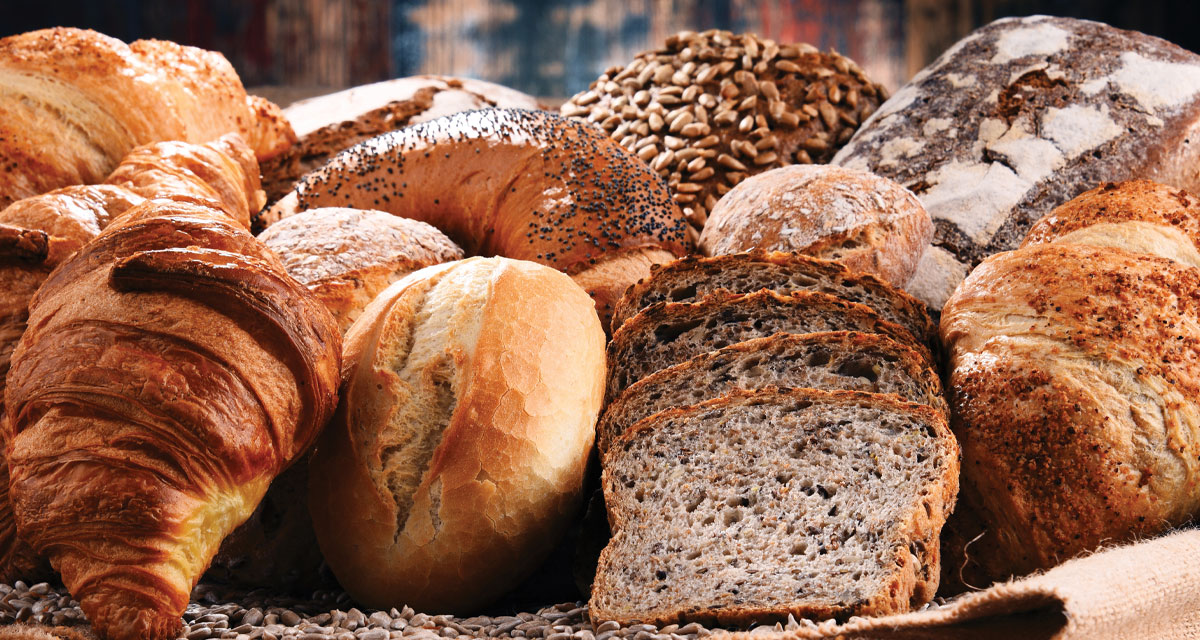The smell of a fresh loaf is irresistible. It invokes happy memories of warmth, fulfillment, and pleasure associated with family, friends, or great meals! You may connect it to a crock of soft butter, a hard cheese platter, or a steaming pot of cooked spaghetti! For some, the experience of breaking bread, seated around a table with others, may feel Biblical. Since prehistoric times, each society has made a specific type of bread. Today, some households prefer to mix flour, water, yeast, sugar, and salt to create unique sizes and shapes, or add additional ingredients to make cheese bread, wheat, rye, pumpernickel, or sourdough. Do you ever wonder why you enjoy a specific type?
Textures and Crisp
Unleavened bread, made by mixing flour with water, is usually baked or fried. You may even have a stack of its product, tortillas, stored in a bread box! Add yeast or another type of leavening agent to the flour and water mixture, and the dough can rise and expand.
- Wheat flour absorbs water to form an elastic dough. As bubbles form, it transitions to a texture which is easily broken.
- Rye contains varying amounts of gluten and is harder to tear.
- Sugar and honey are ingredients to encourage faster yeast growth.
- Water, beer, milk, and fruit juice are liquids that influence the flavor and texture.
- Some form of fat, such as butter, adds flavor to create a rich and flaky crust in pastry bread.
- Commercialized rolls or loaves include preservatives, emulsifiers, bleaches, or coloring agents to improve their appearance and shelf-life.
Fact: Louis Pasteur, in the 1850s, identified yeast as a living organism.
Nutrition
In Biblical terms, bread is the food that sustains life. It’s inaccurate to believe starch, protein, and vitamins offer total nutritional value. Many nutrients found in grains do not transfer in milling and processing; yet, depending on the type of bread, enriched white flour, for instance, has more B complex vitamins than whole wheat.
Be aware, some ingredients increase the nutritional value: the list includes eggs, cheeses, dried fruit, dried nonfat milk, seeds, soy flour, sprouted grains, and raisins.
- A slice of white bread is not fattening. It contains 65 to 80 calories, two grams of protein, and nine-tenths of a gram of fat. And fortified niacin (to lower cholesterol), thiamine (vitamin B1), and two essential minerals, iron and calcium.
- American Rye has more fiber and protein than white bread and only two vitamins and minerals, iron and thiamine.
- Whole wheat is more nutritious than white bread, containing iron, and thiamine. It contains only 60 calories, 1.6 grams of fiber, and 2.4 grams of protein.
- A multi-grain bread comprises whole-grain flours, seeds, and sprouts. It is fortified with iron and thiamine and offers 65 calories, one gram of fiber, and 2.5 grams of protein. Except for whole wheat, which has 1.1 gram of fat, white, rye, and multi-grain all have 0.9 grams of fat.
- Bagels, made with enriched flour, offer almost three times the calories and carbs of white bread. A bagel contains 0.6 grams of fiber, 6 grams of protein, and varying amounts of iron, niacin, thiamine, and riboflavin (vitamin B2, promoting tissue regeneration.)
Fact: Dry toast has calories equal to those of a slice of bread.
The Language of Bread
Ever wonder, “What’s the difference between whole-wheat and wheat bread? Who knew bread would lack a standard definition? Instead, we tend to select based on a preferred taste.
- Whole-wheat contains whole-grain wheat flour; wheat bread is likely to be produced from refined white flour, bran, and other ingredients.
- Brioche originated in France, and can be defined as either bread or cake. Adding butter and eggs changes the texture and softens the taste!
- Ciabatta is an Italian creation made from olive oil and various herbs, creating a chewy and moist bread.
- Focaccia—the word alone adds calories! It’s an Italian yeast bread, similar to pizza, and usually contains olive oil, onions, garlic, among other herbs.
Bread Maker? Not Necessary!
Creating loaves is similar to art! With each attempt, you’ll improve the bread in flavor and taste. There are how-to videos, a wide variety of books, and easy to follow, step-by-step instructions. The best part—you can keep dough balls in the refrigerator for up to three days. Right out of the oven, no matter what the hour, expect the first loaf to disappear quickly! Consider making two!
Next Month: “Fact and Fallacy about Cheese”























